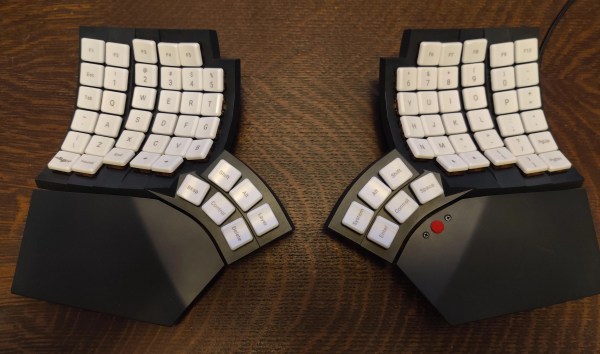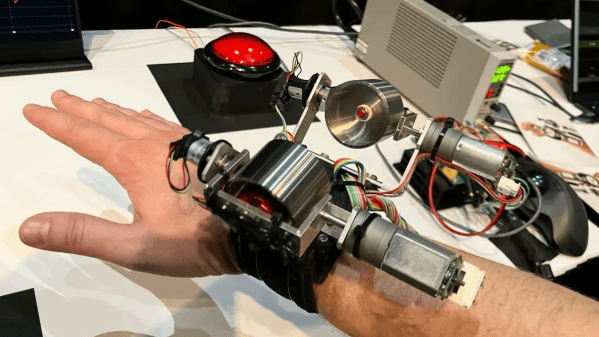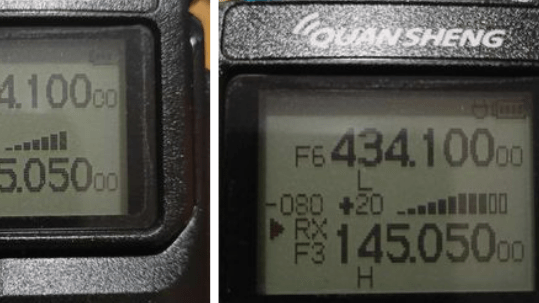“As California goes, so goes the nation.” That adage has been true on and off for the last 100 years or so, and it’s true again now that GM’s Cruise self-driving car unit has halted operations across the United States, just a couple of days after California’s DMV suspended its license to conduct driverless tests on state roadways. The nationwide shutdown of testing was undertaken voluntarily by the company and takes their sore beset self-driving taxi fleet off the road in Phoenix, Houston, Austin, Dallas, and Miami, in addition to the California ban, which seemed to be mainly happening in San Francisco. Cruise’s fleet has suffered all manner of indignities over the last few months, from vandalism to “coning” pranks to even being used as rolling hookup spots, and that’s not to mention all the trouble they caused by brigading to the same address or losing games of chicken with a semi and a firetruck. We’re not sure what to make of all this; despite our somewhat snarky commentary on the company’s woes, we take little pleasure in this development other than to the degree it probably increases roadway safety in the former test cities. We really do want to see self-driving cars succeed, at least for certain use cases, but it seems like this is a case of too much, too soon for the technology we currently have at our disposal.
Keebin’ With Kristina: The One With The Tile-Based Macropad
Prolific Hackaday.io member [Michael Gardi] has hit upon the biggest problem with making reprogrammable macro pads — the legend situation. What do you do when the whole point is that the keys can so easily be changed?
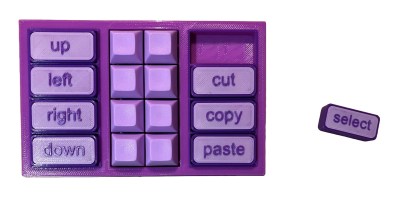 There are a couple of options: blank keycaps and memorization, re-legendable keycaps, and little screens instead of keycaps. Surely there has to be another way, and [Michael] has discovered one: a tile-based system of descriptors.
There are a couple of options: blank keycaps and memorization, re-legendable keycaps, and little screens instead of keycaps. Surely there has to be another way, and [Michael] has discovered one: a tile-based system of descriptors.
As you can see, the labels are removable 3D-printed tiles that swap out with ease thanks to tiny magnets. But these aren’t just tidy labels. Inserting a new label automatically changes the macro! Each tile holds a “simple numeric value” which maps it to a macro when inserted and detected by a Hall effect sensor. I can’t wait to hear these tiles click in action during a demo video, which I can only hope is forthcoming.
Continue reading “Keebin’ With Kristina: The One With The Tile-Based Macropad”
Screech Owl Is A Tribute To The Eowave Persephone
The Eowave Persephone was a beautiful thing—a monophonic ribbon synth capable of producing clean, smoothly varying tones. [Ben Glover] used to own a nice example that formerly belonged to Peter Christopherson, but lost it in the shifting sands of time. His solution was to build one of his own from scratch.
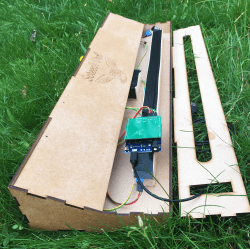
Known as the Screech Owl, the build is based around a custom shield designed to suit the Arduino Leonardo. The primary control interface is a Softpot 500 mm membrane potentiometer, layered up with a further thin film pressure sensor which provides aftertouch control. The Leonardo reads these sensors and synthesizes the appropriate frequencies in turn.
All the electronics is wrapped up inside a tidy laser-cut enclosure that roughly approximates the design of the original Eowave device. [Ben] noted the value of services like Fiverr and ChatGPT for helping him with the design, while he also enjoyed getting his first shield design professionally manufactured via JLCPCB.
It’s a tidy build, and in [Ben’s] capable hands, it sounds pretty good, too. We’ve seen some other great ribbon controlled synths before, too. Video after the break.
Continue reading “Screech Owl Is A Tribute To The Eowave Persephone”
Try It Out
It’s like Star Wars versus Star Trek at a SciFi convention, or asking creamy or chunky at the National Peanut Butter Appreciation Festival. (OK, we made that one up.) When Jenny reviewed the 1.0 version of LibrePCB, it opened the floodgates. Only on Hackaday!
Of course it makes sense that in a community of hardware hackers, folks who are not unfamiliar with the fine art and engineering of designing their own PCBs, have their favorite tools. Let’s face it, all PCB design software is idiosyncratic, and takes some learning. But the more fluent you are with your tool of choice, the more effort you have invested in mastering it, leading to something like the sunk-cost phenomenon: because you’ve put so much into it, you can’t think of leaving it.
The beauty of open-source software tools is that there’s almost nothing, aside from your own psychology, stopping you from picking up another PCB program, kicking the proverbial tires with a simple design, and seeing how it works for you. That’s what Jenny did here, and what she’s encouraged me to do. Whether it’s beginner-friendly Fritzing (also recently in version 1.0), upstarts LibrePCB or Horizon EDA, heavyweight champion KiCAD, or the loose-knit conglomeration of tools in coralEDA, you have enough choices that something is going to fit your PCB hand like a glove.
I certainly wouldn’t risk a swap up to a new tool on something super complicated, or something with a tight deadline, but why not start up a fun project to test it out? Maybe follow Tom Nardi’s lead and make a Simple Add-on, for a badge or just as a blinky to put on your desk? Don’t be afraid to try something new!
Input Device Gets New Input Device
One of the nicest things about a trackpoint is that you don’t have to take your hands off the keyboard. One of the worst things about a trackpoint is its usual placement, which can force a weird hand position that can cause repetitive stress injury.
 [notshitashi] has done an incredible job of adding a trackpoint to the Glove80 wireless split keyboard. It must have been really scary to drill holes in the palm rests of such a nice and not-cheap keyboard, but [notshitashi] soldiered on nonetheless, and the end result looks great.
[notshitashi] has done an incredible job of adding a trackpoint to the Glove80 wireless split keyboard. It must have been really scary to drill holes in the palm rests of such a nice and not-cheap keyboard, but [notshitashi] soldiered on nonetheless, and the end result looks great.
Starting with a trackpoint module from Ali, [notshitashi] found that it didn’t fit the palm rest without being trimmed down, so they desoldered the business part from the main PCB and reattached it with wires. They had to go through a few of them to get it just right, but that’s the way it goes sometimes.
[notshitashi] calls this “a bit of a cheat and dirty hack” because the trackpoint module is wired and, therefore, a separate USB HID. Yes, the Glove80 has GPIO connectors in both halves, but the problem is that stock ZMK has yet to support pointing devices. We don’t care; this is quite the elegant hack anyway.
Want to jazz up your mechanical keyboard with a trackpoint? Here’s a handy guide. Or, you can perform a transplant.
See Some Of The Stranger VR Ideas From SIGGRAPH
[Devin Coldewey] shared his experiences with some of the more unusual VR concepts on display at SIGGRAPH 2023. Some of these ideas are pretty interesting in their own right, and even if they aren’t going to actually become commercial products they give some insight into the kinds of problems that are being worked on. Read on to see if anything sparks ideas of your own.
In the area of haptics and physical feedback, Sony shared research prototypes that look like short batons in which are hidden movable weights. These weights can shift up or down on demand, altering their center of gravity. [Devin] states that these units had a mild effect on their own, but when combined with VR visuals the result was impressive. There’s a video demonstration of how they work. Continue reading “See Some Of The Stranger VR Ideas From SIGGRAPH”
Inexpensive Ham Radio Gets Upgrades Thanks To A Trojan
Love them or hate them, the crop of cheap hand-held amateur radio transceivers is here to stay. They’re generally horrible radios, often smearing spurious emissions across the spectrum, but they’re cheap enough to throw in a glove box for emergencies, and they invite experimentation — for instance, modifying the firmware to add functionality the OEM didn’t think to offer.
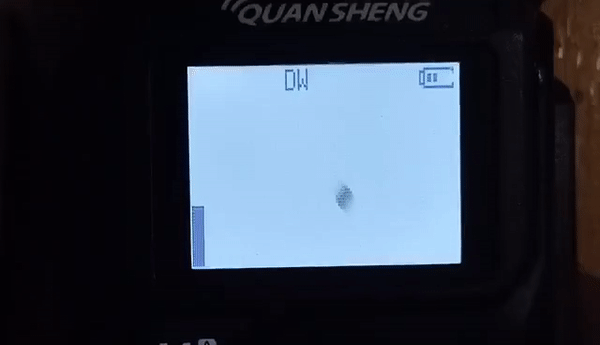 The new hotness in this class of radios is the Quansheng UV-K5, a two-band transceiver you can pick up for about $40, and we suspect it’ll get hotter still with this firmware trojan by [Piotr (SQ9P)]. We’ve already seen a firmware hack for these radios, one that aimed at unlocking the full frequency range of the RF chip at the heart of the radio. Honestly, we’re not huge fans of these mods, which potentially interfere with other allocations across multiple bands. But [Piotr]’s hacks seem a bit more innocuous, focusing mainly on modifying the radio’s display and adding useful features, such as a calibrated received signal strength bar graph and a numerical RSSI display. The really neat new feature, though, is the spectrum display, which shows activity across a 2-MHz slice of spectrum centered on the currently set frequency. And just because he could, [Piotr] put in a game of Pong.
The new hotness in this class of radios is the Quansheng UV-K5, a two-band transceiver you can pick up for about $40, and we suspect it’ll get hotter still with this firmware trojan by [Piotr (SQ9P)]. We’ve already seen a firmware hack for these radios, one that aimed at unlocking the full frequency range of the RF chip at the heart of the radio. Honestly, we’re not huge fans of these mods, which potentially interfere with other allocations across multiple bands. But [Piotr]’s hacks seem a bit more innocuous, focusing mainly on modifying the radio’s display and adding useful features, such as a calibrated received signal strength bar graph and a numerical RSSI display. The really neat new feature, though, is the spectrum display, which shows activity across a 2-MHz slice of spectrum centered on the currently set frequency. And just because he could, [Piotr] put in a game of Pong.
[Piotr]’s description of the mod as a trojan seems apt since his new programs run in parallel to the OEM firmware by wrapping its vector table. We’d imagine other mods are possible, and we’re keen to see what people come up with for these hackable little units. Just make sure you’re staying within the law, especially in the United States — the FCC does not play games (third item).





